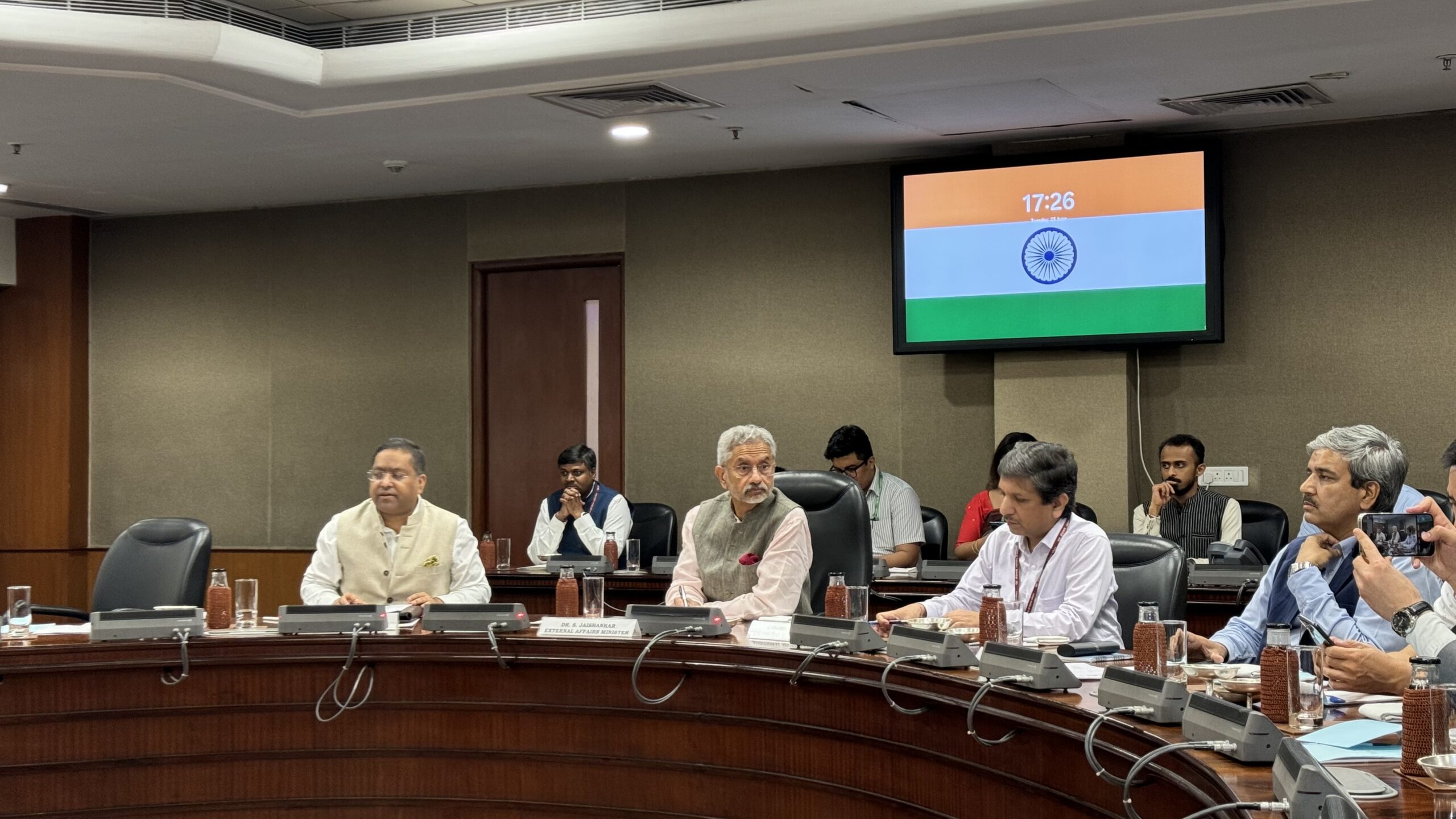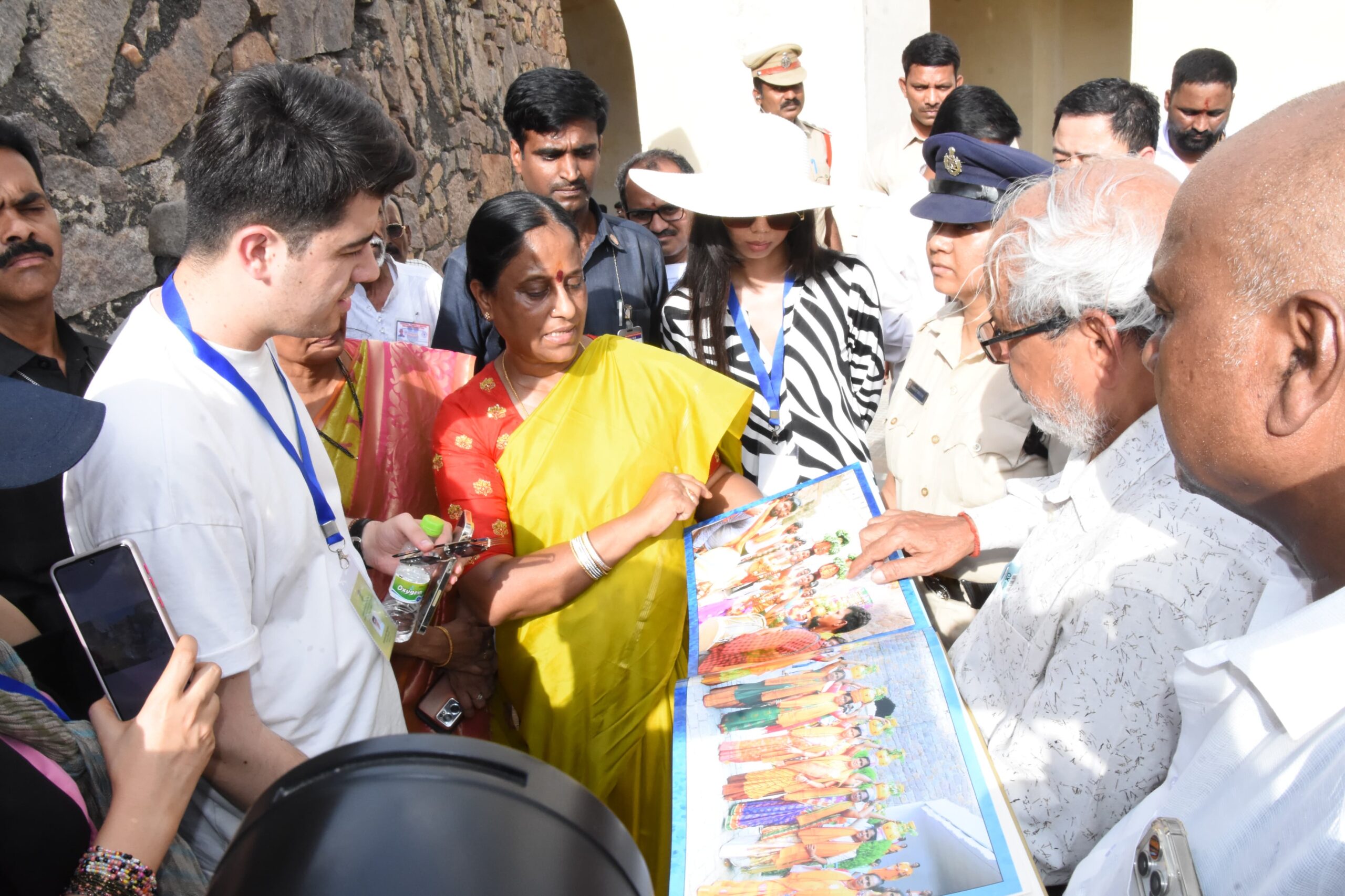HYDERABAD – The Eurasian delegation of journalists from Armenia, Belarus, Georgia, Iran, Kazakhstan, the Kyrgyz Republic, Mongolia, Tajikistan, Turkmenistan, and Uzbekistan embarked on a Familiarization Visit to New Delhi and Hyderabad from June 22 to 29 to experience India’s rich heritage and vibrant culture.

The delegation visits Taj Mahal. Photo credit: The Astana Times
Historical journey in New Delhi
Upon arriving in New Delhi, the delegation began their visit with an in-depth exploration of the National Museum. They then toured the Humayun’s Tomb, a magnificent garden tomb that marks the first substantial example of Mughal architecture in India. This architectural marvel features a well-developed double-domed elevation with grand kiosks, a design tradition that culminated a century later in the construction of the Taj Mahal. Unlike the Taj Mahal, which was built by Shah Jahan, the tomb of Humayun, the second Mughal Emperor of India, was commissioned by his widow, Bega Begum (Hajji Begum), 14 years after his death. Over time, the tomb became the burial site for various members of the ruling family and now contains approximately 150 graves.

Taj Mahal. Photo credit: The Astana Times
Next, the delegation went to the Qutb (Qutab) Minar, red and buff sandstone and the highest tower in India. Some say that it was built as a tower of victory and for protection. Others say that it was constructed to give calls for prayer. But initially it was built to observe the changing position of the sun.

Qutb Minar. Photo credit: The Astana Times
The delegation’s journey continued to Agra to witness the Taj Mahal, one of the modern Seven Wonders of the World. This magnificent monument stands as a testament to Shah Jahan’s love for his wife Mumtaz Mahal, who bore him fourteen children, of whom only seven survived. This masterpiece embodies the pinnacle of Mughal art and architecture.
All three sites are UNESCO (the United Nations Educational, Scientific and Cultural Organization) World Heritage sites.
Nation’s advancement
On June 24, the delegation met with ReNew, India’s leading decarbonization solutions provider. In particular, ReNew has implemented a unique energy inclusion Project Surya that aims to help women transition from traditional energy sources to renewable energy. The company, already present in Egypt, is exploring opportunities in Kazakhstan and Uzbekistan.
The delegation also engaged with the Federation of Indian Chambers of Commerce and Industry (FICCI) Ladies Organization, which has empowered millions of women across various sectors since its inception in 1983.

A meeting with Indian Minister of External Affairs Dr.Subrahmanyam Jaishankar. Photo credit: The Astana Times
“You do not have to empower women – women are already empowered,” emphasized Saloni Mehta, Governing Body Member of the FICCI Ladies Organization.
The next day started with a visit to Pradhanmantri Sangrahalaya, a public museum dedicated to honoring every Prime Minister of India since Independence and documenting their contributions to the nation’s development.
After exploring the country’s chronology, the delegation visited the Press Trust of India, the nation’s premier news agency.

Pradhanmantri Sangrahalaya. Photo credit: The Astana Times
Meetings with representatives from India’s Ministry of Ports, Shipping and Waterways, the Ministry of Defence, and Minister of External Affairs Dr. Subrahmanyam Jaishankar underscored India’s openness to collaboration in these respective fields.
A blend of tradition and innovation in Hyderabad
On June 26, the delegation traveled to Hyderabad, the capital and largest city of the state of Telangana. Upon arrival and after lunch, they visited Golconda Fort, one of the most magnificent fortress complexes in India. Initially a mud fort, it was later fortified and now boasts ruins of palaces, a mosque, and a hilltop pavilion. The acoustics of the fort are stunning; a handclap at the entrance can be heard at the hilltop, almost a kilometer away.

Golconda Fort. Photo credit: The Astana Times
The day ended with a visit to the beautiful Shilparamam, a unique crafts village created within a bustling metro hub with retro crafts, arts, culture, folklore, and celebrations. The delegation was thoroughly impressed by a performance by two young women who danced Kuchipudi, an Indian classical dance known for its artistic expression. That was the moment of a full immersion into the nation’s culture. A particularly captivating moment was when the dancers performed on a brass plate, balancing on its sharp edges, leaving the guests in awe.

Dancers perform Kuchipudi, Indian classical dance. Photo credit: India’s Ministry of External Affairs
The delegation toured Dr. Reddy’s Laboratories, a leading multinational pharmaceutical company, and Skyroot Aerospace, a pioneering space-launch vehicle manufacturer. They also visited T-Hub, a premier innovation hub, and the Indian School of Business, where nearly half the students are women.
Cinematic Final
The last sightseeing stop for the delegation was Ramoji Film City, the world’s largest film studio complex. Locals say that a filmmaker can walk in with a script and walk out with a completed film. The film city features colossal amusement centers and replicas of towns and villages. Notably, one of its massive structures was built specifically for shooting the famous epic action movie, Baahubali.

The Eurasian delegation visits Ramoji Film City
Ramoji Film City was founded by Ramoji Rao, who initially started as a low-middle-class journalist before becoming a producer and director. Unfortunately, he passed away a month ago at the age of 87. Five years before his death, he constructed a memorial complex for himself and requested to be buried there.

Hyderabad government member shows Indian festivities at Golconda Fort. Photo credit: India’s Ministry of External Affairs.
India’s diversity left a lasting impression on the delegation. Beyond the sights witnessed, there is much more to explore. For example, states such as West Bengal and Uttar Pradesh are known for their distinct cultural nuances, the most ancient Indian traditions, rituals, and intriguing local mystique, as stated by residents.


